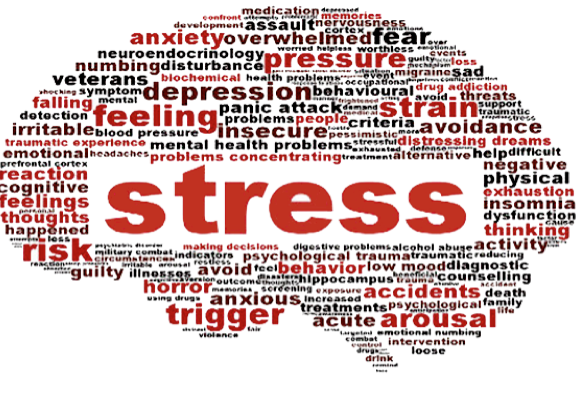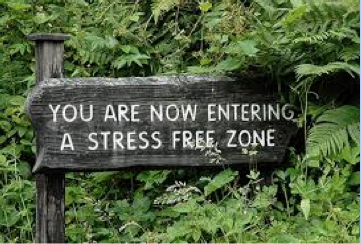Dr Jo Gilmartin, People Systems and Services (PSS) Research Group, School of Healthcare, University of Leeds, J.Gilmartin@leeds.ac.uk
 Contemporary academia has recently been reported as one of the most stressful professions in the United Kingdom; not the dreaming spires of academia; a life of reflection, unpacking concepts, writing papers, sunny afternoons punting on the river, or ‘Educating Rita’. Modern day academia is far removed from such idylls with stressed staff in never ending loop of excessive workloads with intensely competitive performance related scrutiny and expectation from organisations, fee-paying students, research grant cutbacks and an increasingly uncertain financial climate. There is growing evidence that universities globally no longer provide the low stress environments that they once did. Similar problems prevail among the clinical workforce with a worldwide shortage of qualified nurses as one of the biggest challenges facing healthcare institutions, levering up role strain and occupational stress. This can impact on work performance, concentration, productivity, health and well-being and influence personal relationships and family life.
Contemporary academia has recently been reported as one of the most stressful professions in the United Kingdom; not the dreaming spires of academia; a life of reflection, unpacking concepts, writing papers, sunny afternoons punting on the river, or ‘Educating Rita’. Modern day academia is far removed from such idylls with stressed staff in never ending loop of excessive workloads with intensely competitive performance related scrutiny and expectation from organisations, fee-paying students, research grant cutbacks and an increasingly uncertain financial climate. There is growing evidence that universities globally no longer provide the low stress environments that they once did. Similar problems prevail among the clinical workforce with a worldwide shortage of qualified nurses as one of the biggest challenges facing healthcare institutions, levering up role strain and occupational stress. This can impact on work performance, concentration, productivity, health and well-being and influence personal relationships and family life.
This blog will provide an overview on stress and consequences on well-being, active planning/ organisation of workload demands, and reducing job stress. There are a range of resources and video clips that you may find useful.
Stress and consequences on well-being
Stress is inevitable part of any work context, and employees experience stress on different levels. People can experience either physical or psychological stress, and stress can be broken into both positive forms (eustress) and negative forms (distress). Negative stress in the can lead to a variety of problems, which in turn can bring about a range of negative consequences for both employees and their employers including health and well-being (web links – Sickness Presenteeism. Burnout-Systematic Review)
Positive coping strategies
There are lots of tips and strategies for reducing stress and the following sections will foreground a range of options to consider. To alter the perception of stress you may invoke inward or outward coping strategies. Inward strategies could include seeking stillness and focus. Outward strategies, such as exercise activities, involve seeking movement, connections and distractions. Although there are a huge range of common coping strategies accessible, the majority of academics rely on social support, active planning, organisation of workload demands, restorative experiences, and suppression of competing experiences, if possible.
Further reading on work related stress & coping:
Brown et al. 2017. Work related stress in forensic mental health professionals: a systematic review. Journal of Forensic Practice. 19 (3)227-238.
Boyd et al. 2011. A longitudinal test of job-demands –resources model among Australian University Academics. Applied Psychology: An International Review. 60 (1) 112-140.
Darabi et al. 2017. Stress among UK academics: identifying who copes best. Further & Higher Education. Vol 41. Issue 3.
Imo et al. 2017. Burnout and psychiatric morbidity among doctors in the UK: a systematic literature review of prevalence and associated factors. British Journal of Psychiatry Bulletin 41, 197-204.
Video on stress: tips for relaxing and letting go – Relax & let go video
Active planning/ organisation of workload demands
This involves concentrating effort & taking some action
- Priorities in order
Prioritising is vital when you are handling heavy workloads. If your priorities are not in order, you will continue to feel overwhelmed. Do not try to multitask, focus on finishing each task flawlessly before progressing to the next. Take it one step at a time or you might start to miss deadlines. If your workload is excessive try to review your workload with your team leader or line manager and clarify expectations, seek help and support.
- Time management strategy
Part of prioritising your tasks involves having a sound time management strategy. Streamline as many processes as you can to avoid repetition. Are you repeating unnecessary tasks that waste time?
- Workspace
Build a creative workspace and ensure your creative space receives plenty of daylight because daylight is essential for productivity and positivity. Plants are a good energy source in your workspace such as a small cactus, spider plant or peace lily and can enhance productivity and happiness. It’s useful to have a designated reading/relaxing chair when you need to take a break from e-mails, reading or marking text online or surfing the net.
- Co-workers
Try to build a solid support network with co-workers and this can help buffer you from the negative effects of job stress. Also, remember to listen to colleagues and offer support when they are in need too. If you are feeling in a low mood or a bit down, connect with others and you’re likely to feel better soon. Go for a walk with a colleague or go into nature, if possible and it will cheer you up.
- Take time for you
If you are handling heavy workloads and you feel stressed out and tense, you can’t give 100% to your job. Whether you take time to relax at lunch time or exercise in the evening or at weekends, ensure you allow yourself quality time to relax, your work performance will benefit from it.
Social Support
Social support can reduce the impact of stressors on health and well-being, job satisfaction and illness risks. Elicit emotional support from family, friends and colleagues; talk about your feelings; lighten up and laugh, humour can strengthen your immune system and boost mood
Restorative coping experiences
Restorative coping is about being able to release stress in places away from the work environment and could include nature related outdoor activities or aerobic exercise.

Inward strategies for seeking stillness and focus
Mindfulness can help to reduce stress through improving emotional regulation, leading to a better mood, increased attention and focus, higher brain functioning with positive consequences for health and  well-being. Principles of good mindfulness include paying attention to the moment-to-moment details of experience such as biking to work in the traffic, going for a jog, facilitating a tutorial or writing a research protocol. Yoga can be a useful stress buster: there are many different styles of yoga to explore such as hatha yoga, ashtanya yoga, hot yoga, yin yoga or restorative yoga. Yoga combines several techniques for stress reduction and can promote better breathing, greater flexibility, increased strength and inner stillness.
well-being. Principles of good mindfulness include paying attention to the moment-to-moment details of experience such as biking to work in the traffic, going for a jog, facilitating a tutorial or writing a research protocol. Yoga can be a useful stress buster: there are many different styles of yoga to explore such as hatha yoga, ashtanya yoga, hot yoga, yin yoga or restorative yoga. Yoga combines several techniques for stress reduction and can promote better breathing, greater flexibility, increased strength and inner stillness.
Video clips with guided mindfulness meditations
Mindfulness meditation to help relieve anxiety and stress –Video
Mindfulness meditation for stress relief –Video
Being present – Video
Resilience & social support – Video
Sit /stand workspace video – Sit/Stand Workstation
Evidence:
de Vibe et al. 2013. Mindfulness training for stress management: RCT study of medical & psychology students. BMC Medical Education. 13/107.
Berto R. 2014. The role of nature in coping with psych-physiological stress: a literature review on restorativeness. Behaviour Sciences 4, 394-409,
Burton et al. 2017. How effective are mindfulness based interventions for reducing stress among health professionals? A systematic review and meta-analysis. Journal of Stress Health. 33(1) 3-13.
Lin et al. 2015 Effects of yoga on stress, adaption and heart rate variability among mental health professionals-a RCT. World views on EBN. 12:4 236 -245.

